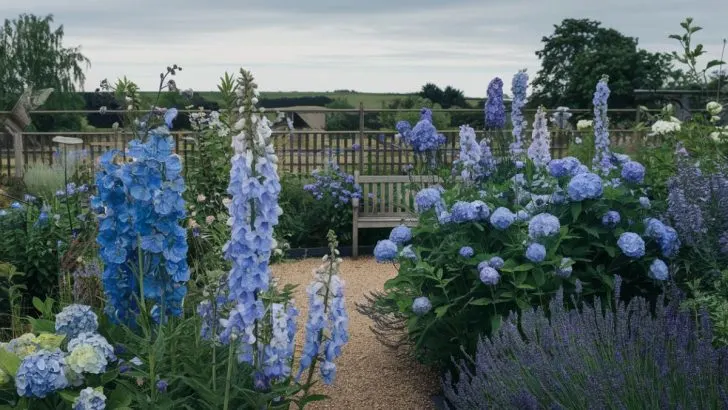If you’re looking to add a touch of tranquility to your garden, blue flowers might be the perfect choice. Known for their ability to evoke calmness and serenity, these blossoms can transform your outdoor space into a peaceful retreat.
This article explores ten stunning blue flowers that can bring new life and a cooling hue to your garden palette.
Whether you’re planning a complete garden overhaul or just a subtle update, these selections will guide you in embracing the charm of blue blooms.
1. Delphinium: The Garden Star
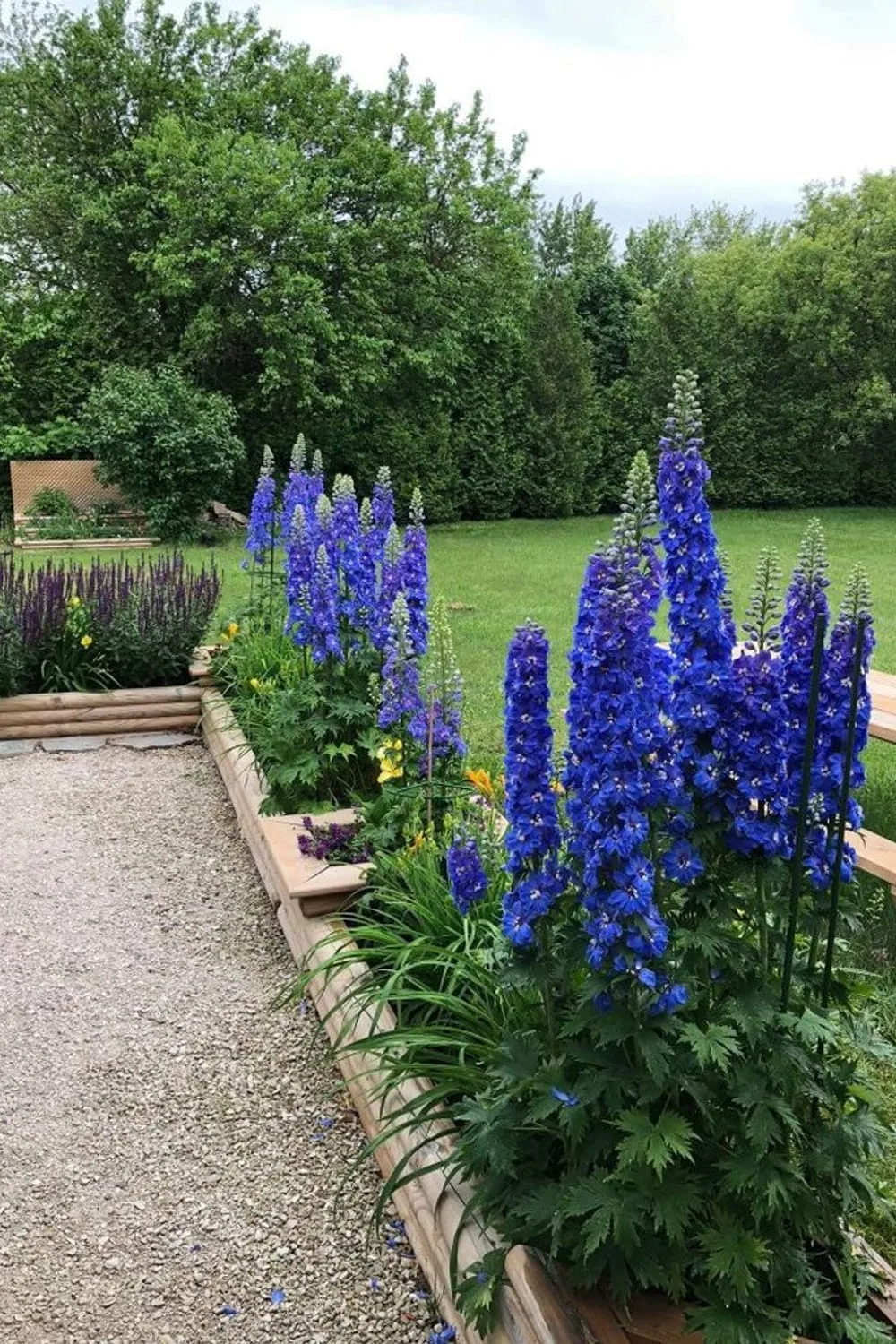
Delphiniums are often the showstoppers of any garden, thanks to their tall spikes and vibrant blue colors. These majestic plants can grow up to 6 feet tall, making them perfect for creating visual interest in borders and backdrops.
They thrive well in cooler climates and prefer a sunny spot with fertile, well-drained soil. To keep them at their best, make sure they are sheltered from strong winds, and remember to stake them as they grow to prevent snapping.
2. Hydrangea: Classic Beauty
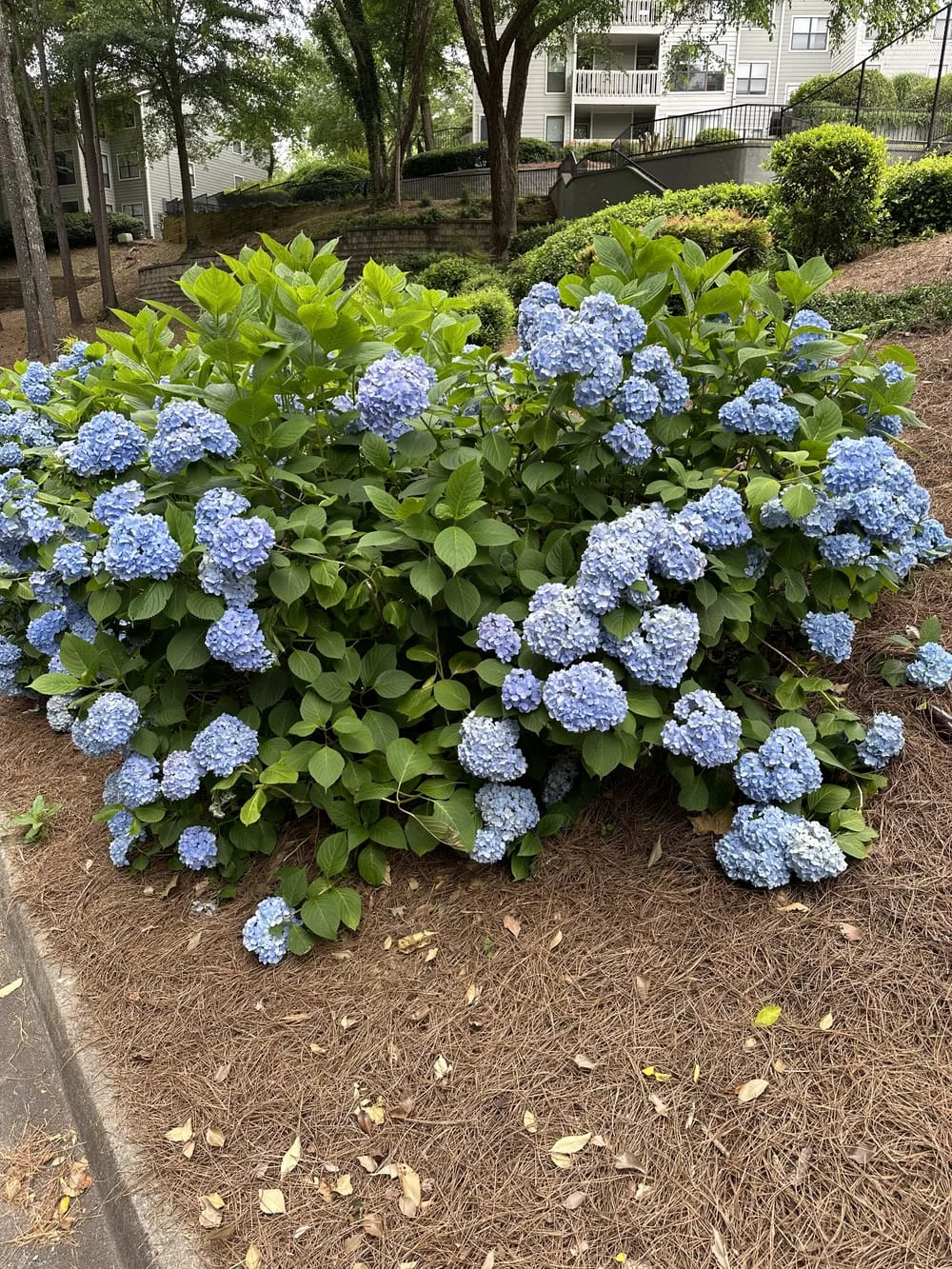
Known for their large, lush blooms, hydrangeas can add a touch of classic elegance to any garden. The blue varieties are particularly captivating, creating a sea of blue that’s hard to ignore. These flowers change color depending on the acidity of the soil, with more acidic soils producing bluer hues.
For the best results, ensure your hydrangeas receive adequate water and are planted in a spot that gets morning sun and afternoon shade.
3. Bluebell: Woodland Charm
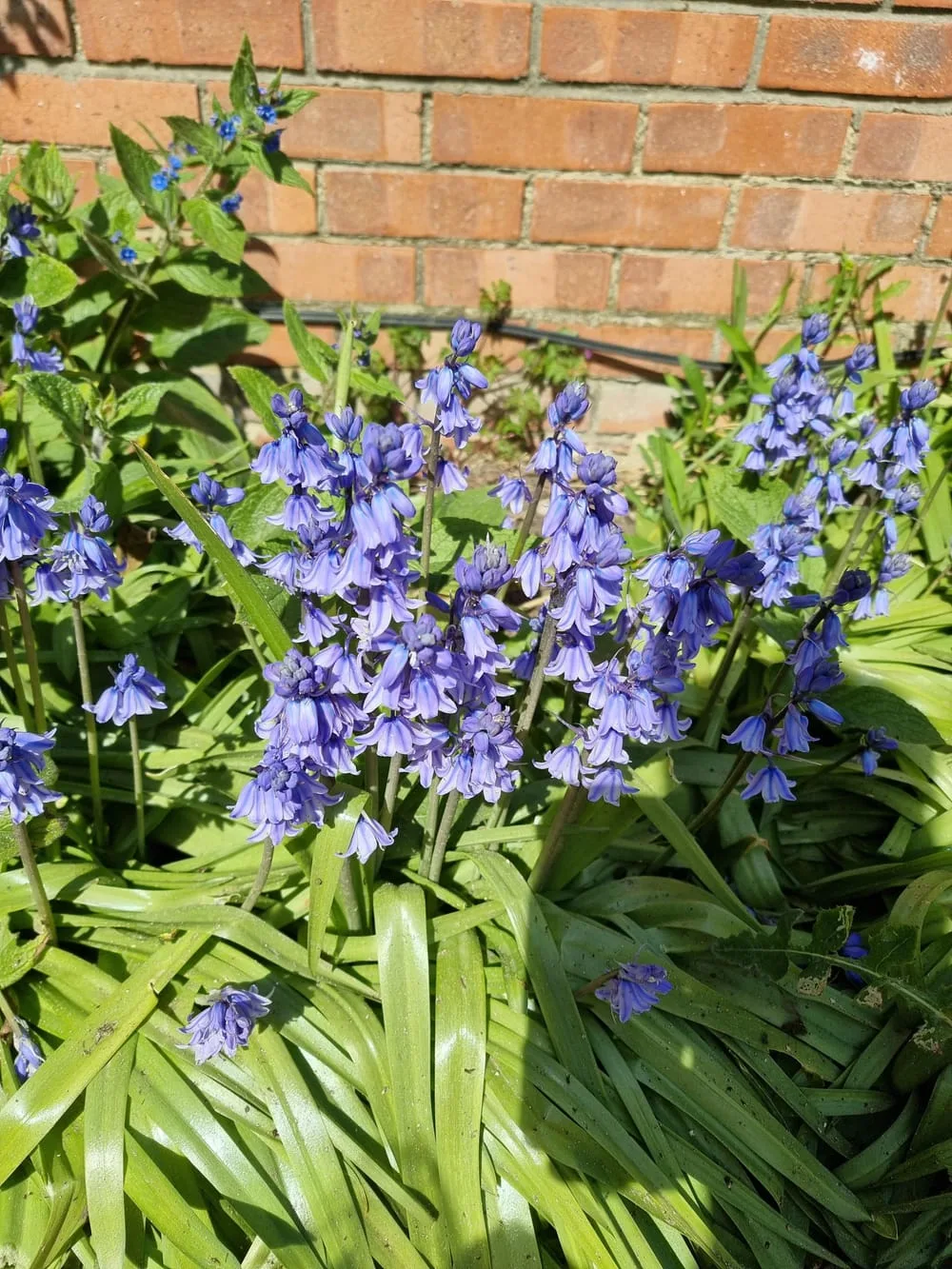
Bluebells are synonymous with spring, carpeting woodland floors with their distinctive blue flowers. These bulbs are excellent for creating naturalistic planting schemes beneath deciduous trees and shrubs.
Bluebells prefer shady, moist conditions and will naturalize beautifully if left undisturbed. Their gentle, nodding blooms make them a delightful addition to any shade garden.
4. Lobelia: Versatile Bloomer
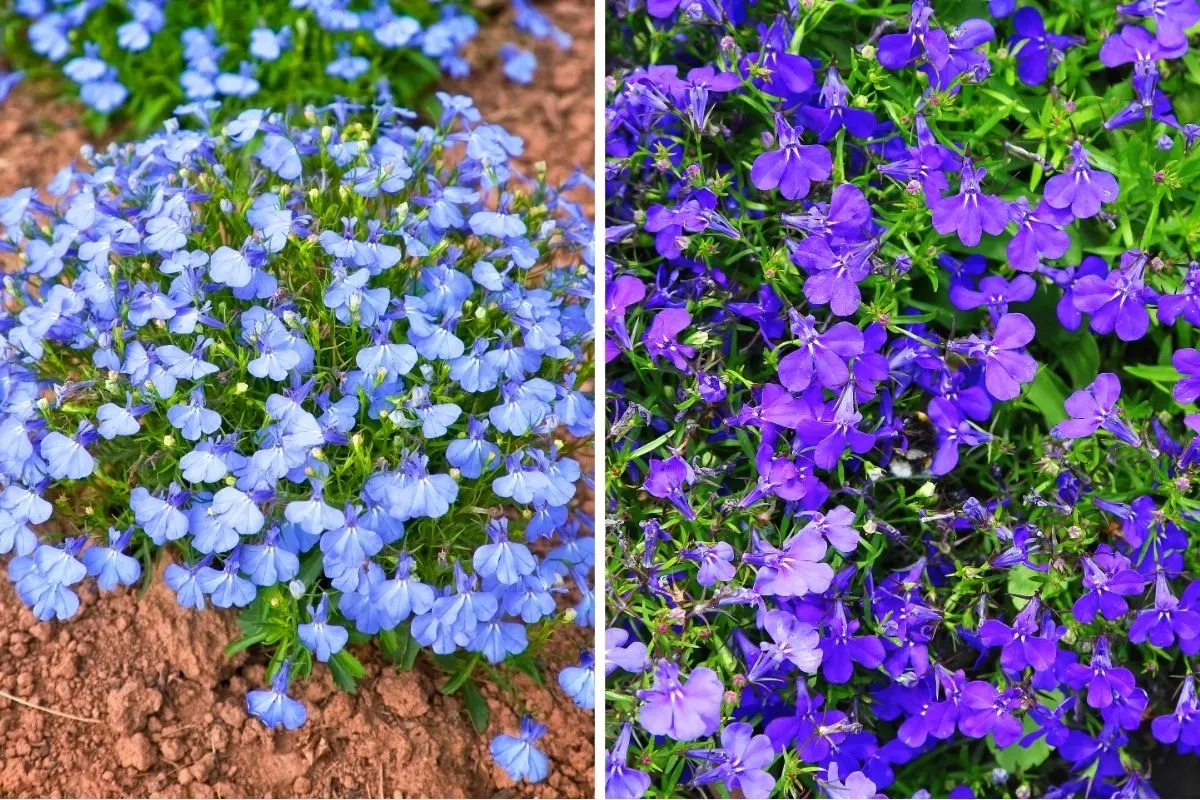
Lobelia is a low-growing plant perfect for borders, hanging baskets, and window boxes. With a variety of blue shades available, from sky blue to deep indigo, it’s easy to match lobelias to your garden color scheme.
These robust little flowers bloom profusely from spring through fall, requiring only occasional deadheading to maintain their vibrant show. They’re also great for attracting pollinators, making your garden a buzzing hub of activity.
5. Iris: Royalty in Bloom
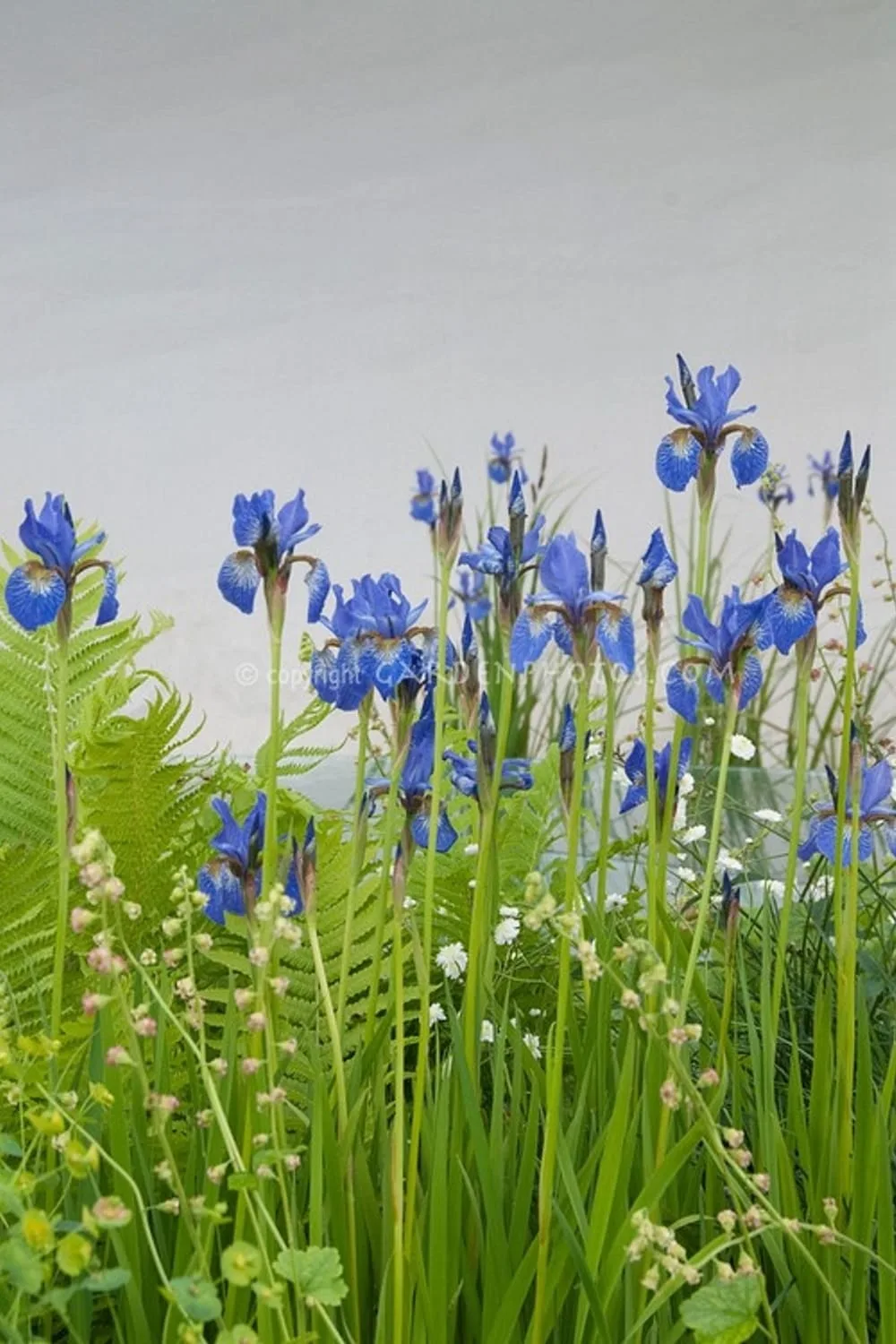
The iris is another regal addition to the garden, known for its intricate blooms and sword-like foliage. Blue varieties of iris, such as ‘Siberian’ or ‘Bearded’, offer a striking visual impact.
These resilient plants prefer well-drained soil and a sunny location. They’re relatively low maintenance and can be divided every few years to keep them healthy and encourage more blooms.
6. Bachelor’s Button: Casual Elegance
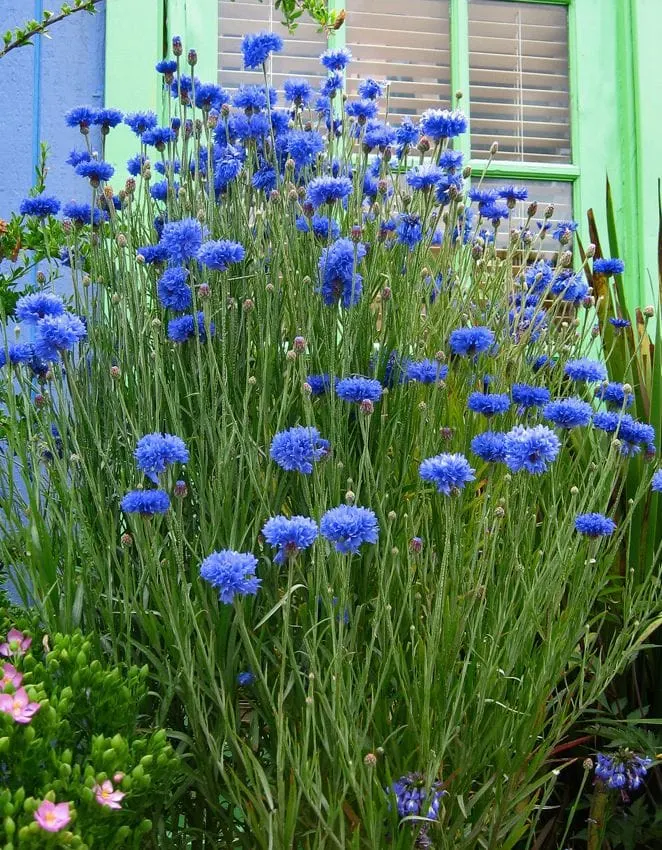
Bachelor’s buttons, or cornflowers, bring a casual charm to gardens with their bright, cheerful flowers. These annuals are easy to grow from seed and are excellent for cutting gardens, as they last well in arrangements.
They do well in poor soils and require little more than sunshine and occasional watering. Their simple, daisy-like blooms add a dash of informal elegance to any garden display.
7. Gentian: Alpine Delight
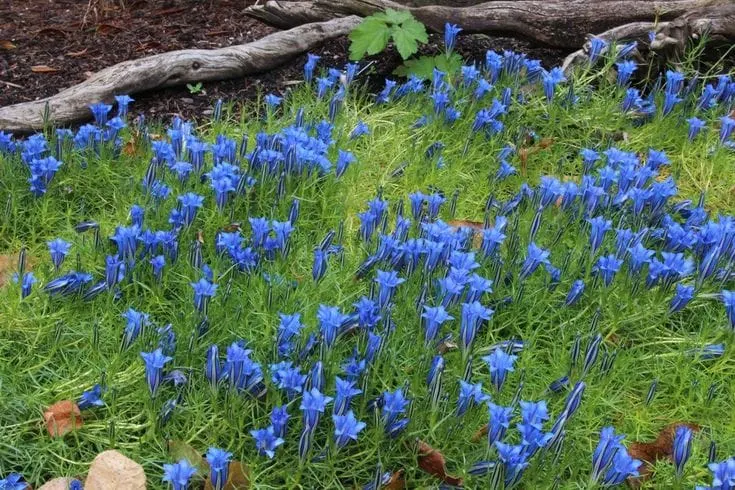
If you’re after a truly unique blue, gentians may be just what you’re looking for. Known for their strikingly intense blue flowers, these alpine plants are perfect for rock gardens and container displays.
They prefer cooler climates and well-drained, gritty soil, mimicking their natural mountainous habitats. With the right conditions, gentians can bloom from late spring into the fall.
8. Aster: Fall Favorite

Asters extend the blooming season into fall, providing a welcome splash of color as other flowers begin to fade. These star-shaped flowers come in a range of blues, from powder blue to vivid azure.
They thrive in full sun and well-drained soil, and are often used in mixed borders or as companions to late flowering perennials like rudbeckia and sedum.
9. Brunnera: The Shade Lover
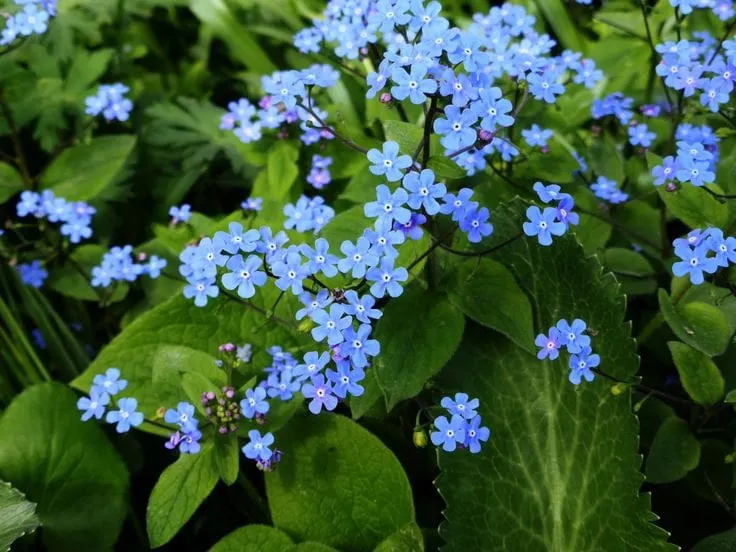
Brunnera, or Siberian bugloss, is an excellent choice for shady spots in the garden. Its heart-shaped leaves form a lush backdrop for its delicate blue flowers, which resemble forget-me-nots.
Brunneras are hardy plants that prefer moist, well-drained soil and can tolerate occasional drought once established. They’re a fantastic choice for creating texture and color in shade gardens.
10. Blue Salvia: Pollinator Magnet
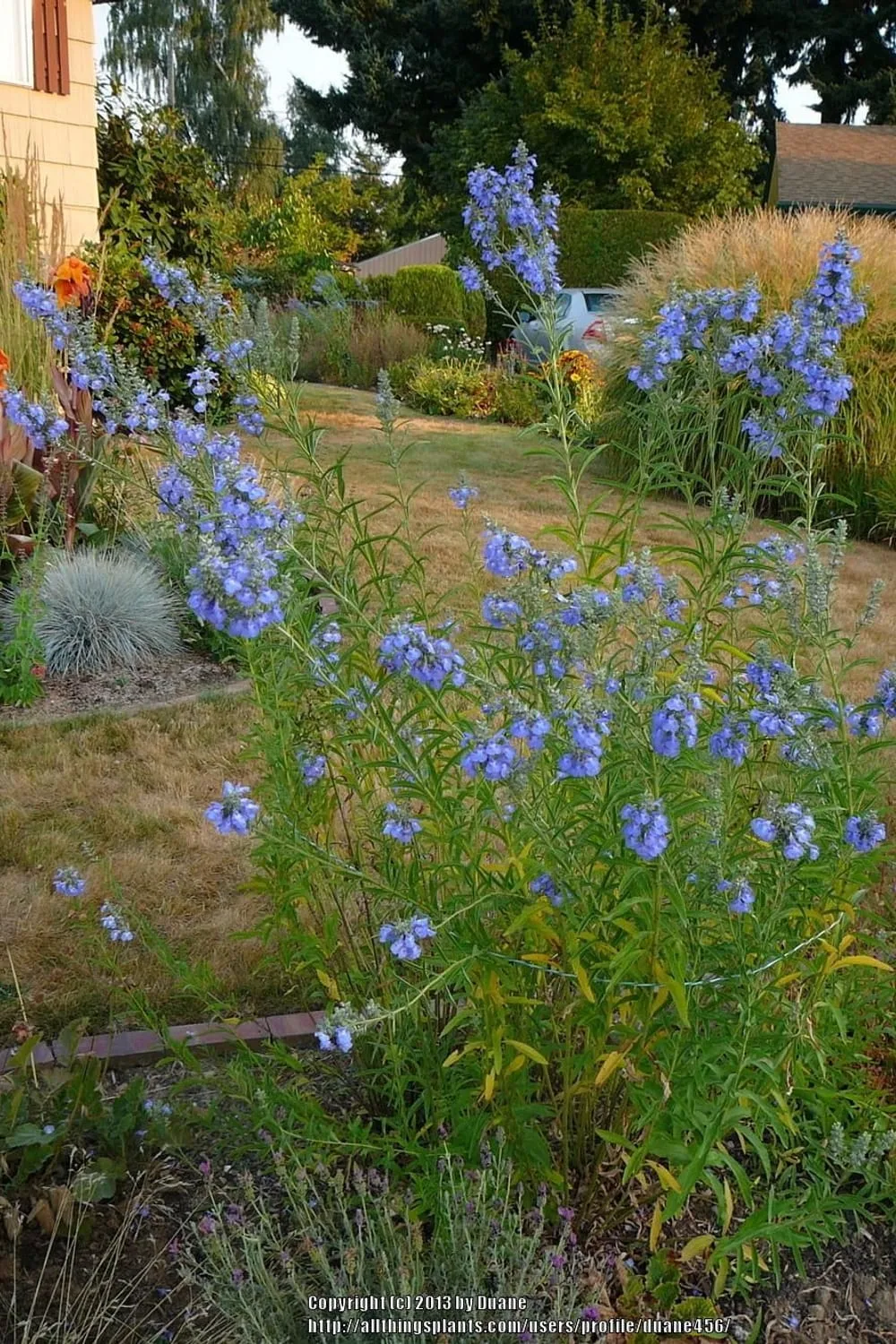
Blue salvia, a favorite among pollinators, is a must-have for gardens looking to support local wildlife. These tall, spiky flowers are both drought-tolerant and long-blooming, making them a resilient addition to any garden.
Salvias prefer full sun and well-drained soil, and their aromatic foliage is often avoided by deer, adding another level of utility for gardeners in areas with these animals.
Sparking Inspiration with Blue Blooms
Adding blue flowers to your garden not only enhances its aesthetic appeal but also invites tranquility and nature’s artistry into your space.
As you consider which of these captivating blue blooms to plant, ponder how they might transform your garden into a serene sanctuary.
The right combination of textures, heights, and shades can create a visual symphony that is both unique to your landscape and reflective of your personal style.
So, roll up your sleeves, grab your trowel, and let these blue beauties inspire your next garden project.

